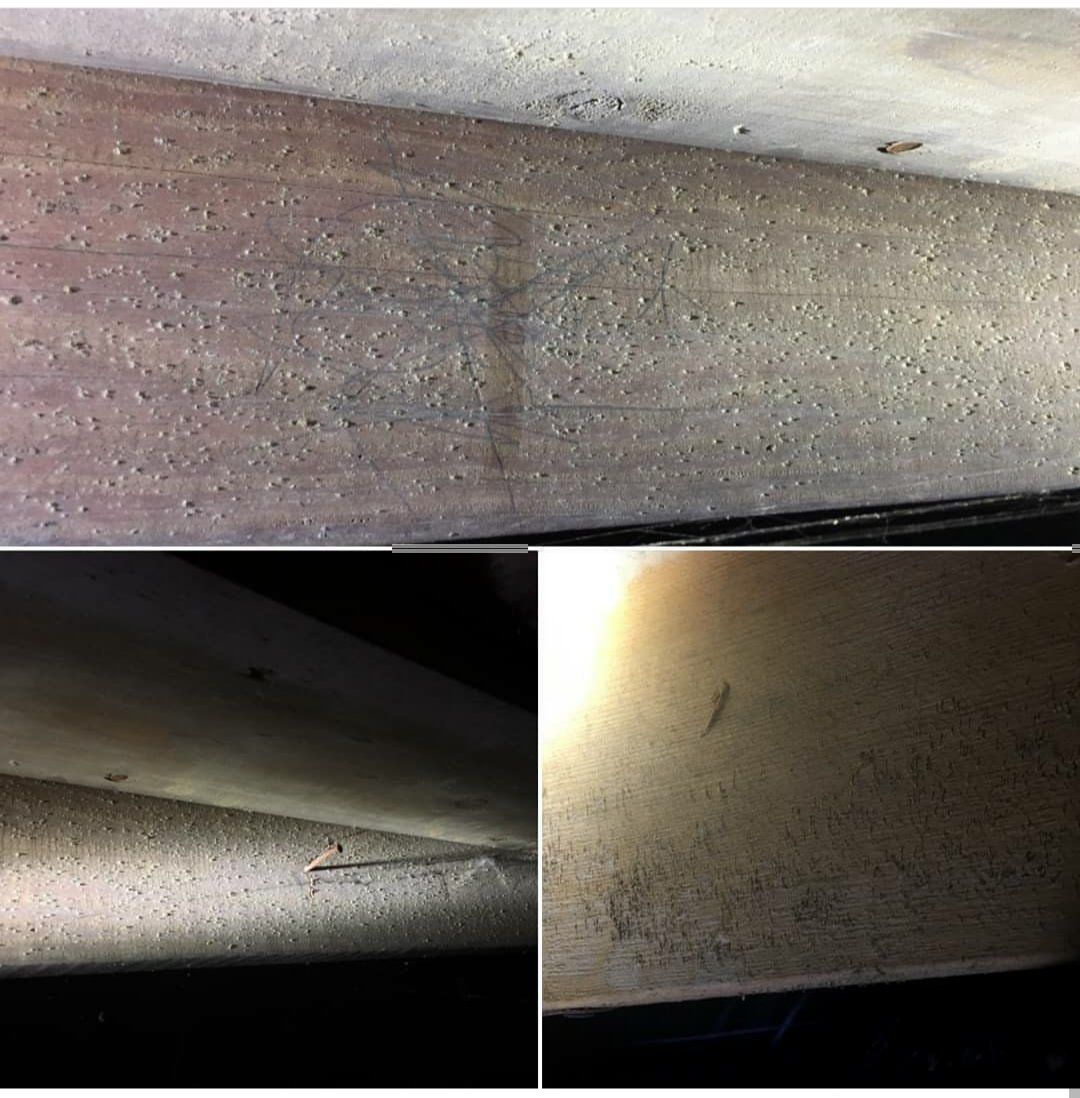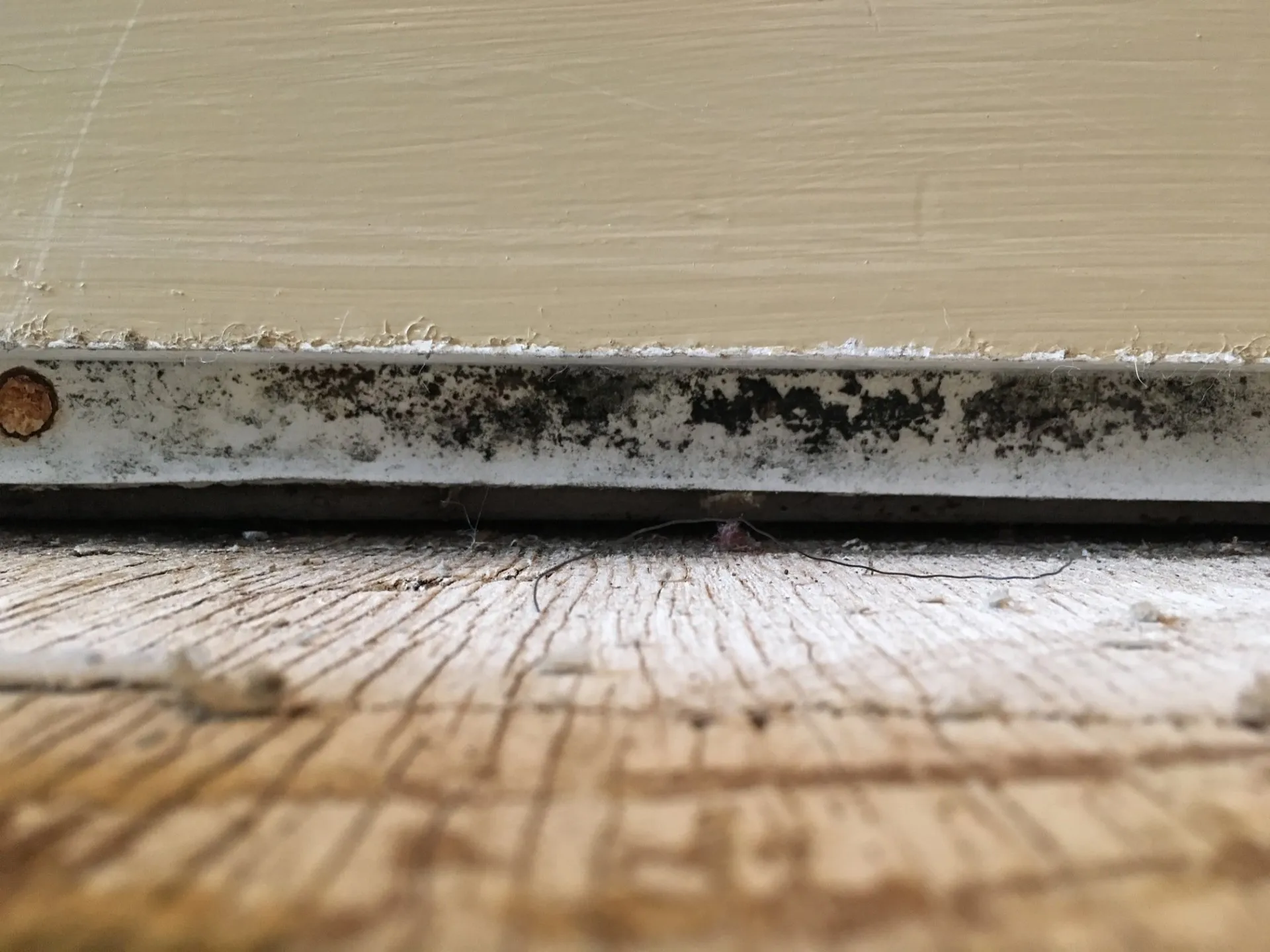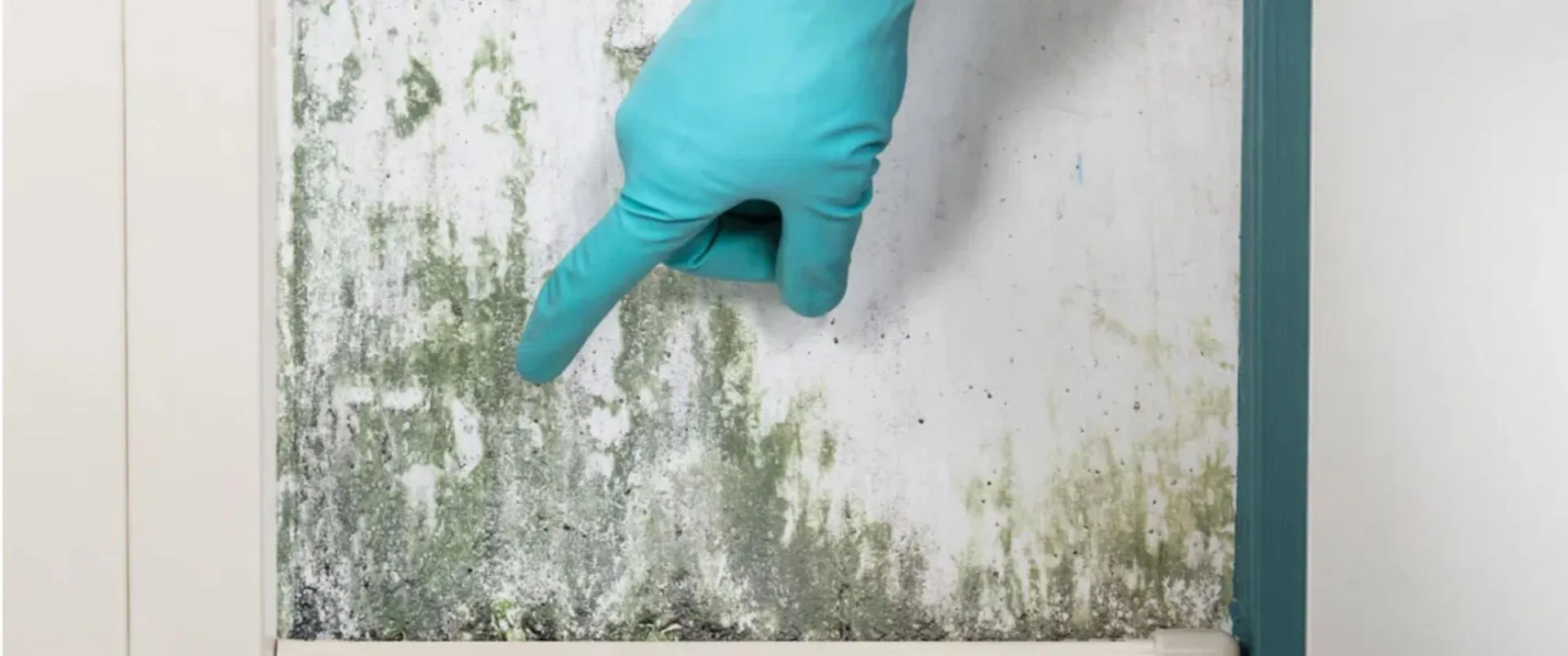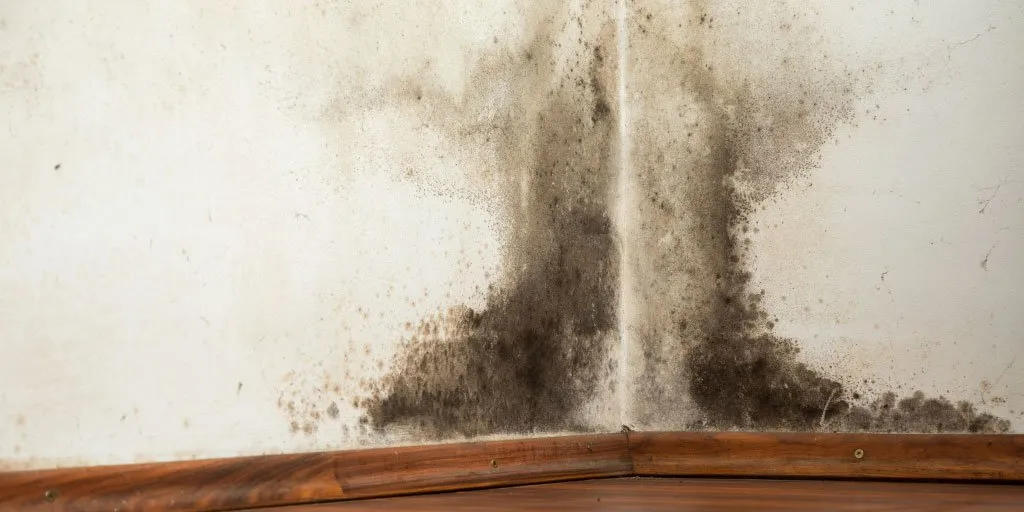
Basement Mold Growth: What to Look For
Mold growth in a basement can be white, black, gray, brown or green in color. Basement mold can be accompanied by dark staining from water leaks in that area. The texture of mold is often powdery or splotchy. It often appears on floor joists, sub-flooring, foundation walls, framing members and interior finished walls. It can also develop on belongs that are stored in the basement.
Pro Tip: From a straight-on perspective, mold growth on basement floor joists can appear to be just dust, staining or discoloration. However, a look at basement mold from an angle, with a flashlight, reveals a whole different story. From an angle, we can often see the shadows casted by the fungal growth.

Removing Mold from Basement Floor Joists & Subfloor
Moldy floor joists and moldy subflooring often need professional remediation. If left untreated, mold problems often worsen with time – leaving property owners with more damage that requires a costlier repair. In order to return clean and safe conditions, all surface mold, embedded root systems and airborne mold must be actively removed from the contaminated basement environment. Basement mold removal should always be completed under the proper containment with necessary HEPA-filtered air filtration. Following remediation, property owners need to address the moisture source that caused the mold in the first place. Removal of the moisture source will ensure that fungal growth does not happen again in the future.
A professional mold remediation company, like Lamunyon Mold, will have the necessary training, experience and professional grade equipment to provide safe, thorough and effective basement mold remediation services for residential and commercial properties. At the start of remediation, skilled technicians will skilled technicians will setup critical containment chambers around the work areas to prevent cross-contamination. To ensure mitigation of airborne mold spores, remediation is always completed under HEPA-filtered negative air filtration with proper air scrubbing. Our specially developed mold cleanup process incorporates powerful surfactants with HEPA vacuuming and scrubbing to remove embedded mold roots and surface mold. Our process addresses moldy floors joists, subfloor, foundation walls, drywall, air quality and more.
Basement Mold Prevention for Kansas Property Owners
The key to mold prevention is moisture control. So, of course the key to basement mold prevention is properly addressing underlying moisture issues. Here are some of the most common basement moisture solutions and basement mold preventative:
Leaks:
- Look for signs of water leaks in your basement ceiling from the levels above.
- Address and repairs leaks immediately.
- Check all HVAC components running through the basement for leaks or condensation.
- Check all plumbing systems running through the basement for leaks or condensation.
Foundation Walls:
- Schedule routine checks of your foundation walls – assess the exterior and the interior for any signs of damage.
- Assess interior foundation walls for signs of water seepage. Water penetration from exterior foundation walls ranges from minor wet spots on the foundation walls or severe flooding in cases of very leaky foundation walls.
- Pay attention to issues in your living space — look for any cracks, masonry damage, or signs of damage in our main living space that could be the result of an underlying foundation issue.
- Manage drainage around your foundation. It is important that all rain runoff is draining away from the building structure so that it does not collect and pool at the foundation seepage and damage.
- Address all foundation issues in a timely manner and consult a foundation repair professional as needed.
Landscape:
- Make sure that you plant your trees with sufficient space between the tree and your home. Tree roots are aggressive and their growth can apply unwanted pressure to your foundation walls. Depending on the kind of tree, you should plant your trees roughly 15-20ft away from the home to avoid damage to your foundation.
- Track the water pattern during heavy rain. Keep an eye on your yard during heavy rain to see if/where the water approaches and pools near your home. If you notice consistent pooling, contact a landscaper or excavation contractor for advice on how to direct the water away from your home.
- Your lawn should slope away from your home. If you notice that your lawn is graded in the wrong direction, towards your home, your home may be vulnerable to flooding. You should consult a landscaper for an appropriate solution.
- When you place mulch, be sure that you leave a 6-inch gaps between your mulch and the siding of your home. The moisture in the mulch can wick into the siding and rot away the building materials.
Drainage:
- If you have basement floor drains, check them regularly to look for any obstructions in or around the drain (dirt, debris, storage items, etc.). Optimized drainage will help to avoid flooding.
- If you have steps leading to your basement, make sure the drain at the base of the steps is free and clear of debris. Stair drains in older homes tend to be on the smaller size and are prone to clogging.
Gutters:
- Make sure that gutters and downspouts direct water AWAY from foundation walls. Water that flows towards the home can seep into the basement and cause water damage and mold development. Downspouts should extend at least six feet away from your home.
- Clean your gutters regularly– your gutters should be free of all debris to avoid backups. Overflowing gutters can lead to water buildup around the foundation walls.
- To help prevent leaves from getting into your gutter, you can install gutter guards. But even with gutter guards, it is still good to make a habit of checking your gutters to make sure nothing gets lodged in the crevices.
- Make sure that the downspouts are not connected to your foundation footer drain tiles or to underground dry wells.
Waterproofing:
- If your basement is below ground level, it may require basement waterproofing to help combat seepage or moisture buildup from groundwater.
- Basement waterproofing can mean the application of sealant materials, the installation of drains and sump pumps, and more.
- If you are considering waterproofing your basement, you should consult a trained waterproofing professional in Kansas to ensure the job gets done right.
Dehumidifier:
- It is important to keep basement humidity levels below 50%. By installing a basement dehumidifier, you can prevent high humidity and keep your basement dry.
- Make sure that you pick a dehumidifier that is the right size and capacity for the needs of that specific space to ensure effectiveness.
- Regular dehumidifier maintenance will help to preserve the quality and effectiveness of your unit.
Declutter: Basements are often used for storage. Excessive contents and clutter can restrict air circulation, which traps warm, moisture air and allows moisture buildup over time. Take some time to regularly organize and purge some of your stored items. This will open up your basement and help to optimize air circulation.
If you suspect mold in your basement, the Lamunyon Team might be able to help. Contact our local Kansas office today — 785-367-2494.




